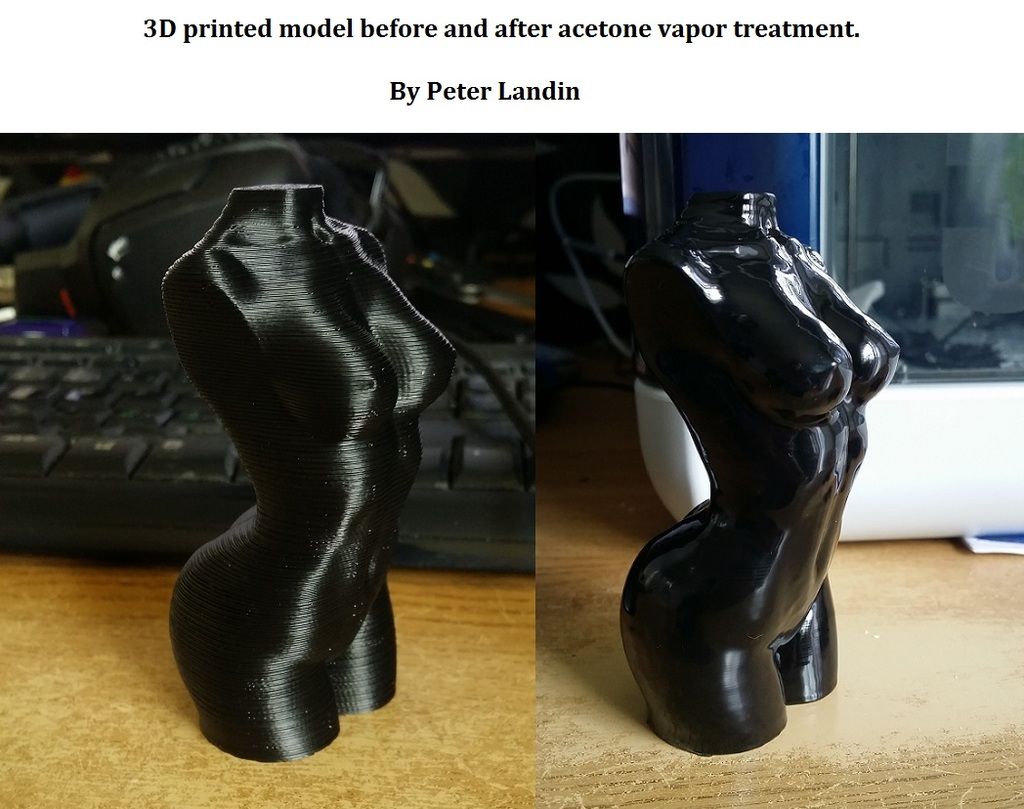Scissors are not surprisingly standard cooking shears 
Yes, it really is that simple, heat the acetone to vapor and then lower a part in for 30 seconds or so. I only have to put up with the "smell" of the acetone that comes off the part once I pull it back out of the vapor. Then I replace the lid and take the pot outside to "dump" any vapor out of it that I didn't use and put the whole mess back into storage.
My printer can do 200X200X200 as it's max size. This seemed to be the cheapest effective method of vapor smoothing a max sized print from my printer.
Unlike the masterpieces created by ysb, my smoothing is limited to items that are printed for purely practical uses. But even there vapor smoothing has a use in making the end product stronger, water tight, and just plain better looking.
This is the latest "finished" item I've printed.

The transmitter mount won't ever compete looks wise with any of the creations done by the level of artists you'll find on this forum, but I want it to at least look like it is "well made" in case anyone who ever see's me flying the thing asks questions about it. A rework of designs found on thingiverse with 123 Design (freebie BTW), a small amount of sanding with some #180 grit, and a bit of acetone smoothing turns out a product that easily meets my expectations for end results.
(I do apologize for the poor camera on my phone. The far better camera is on the drone, but it's a pain to disconnect and reconnect if I'm just taking one picture)



